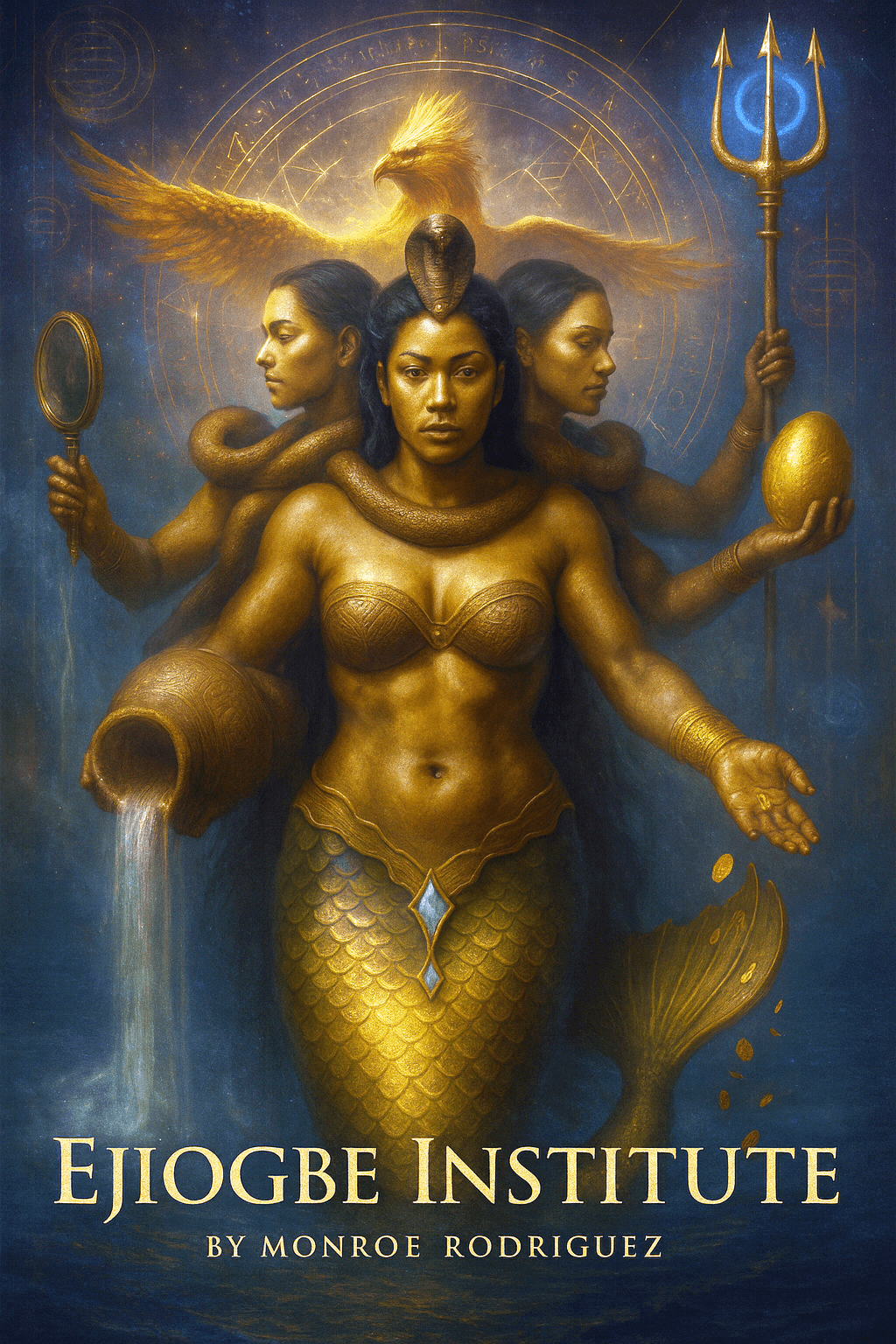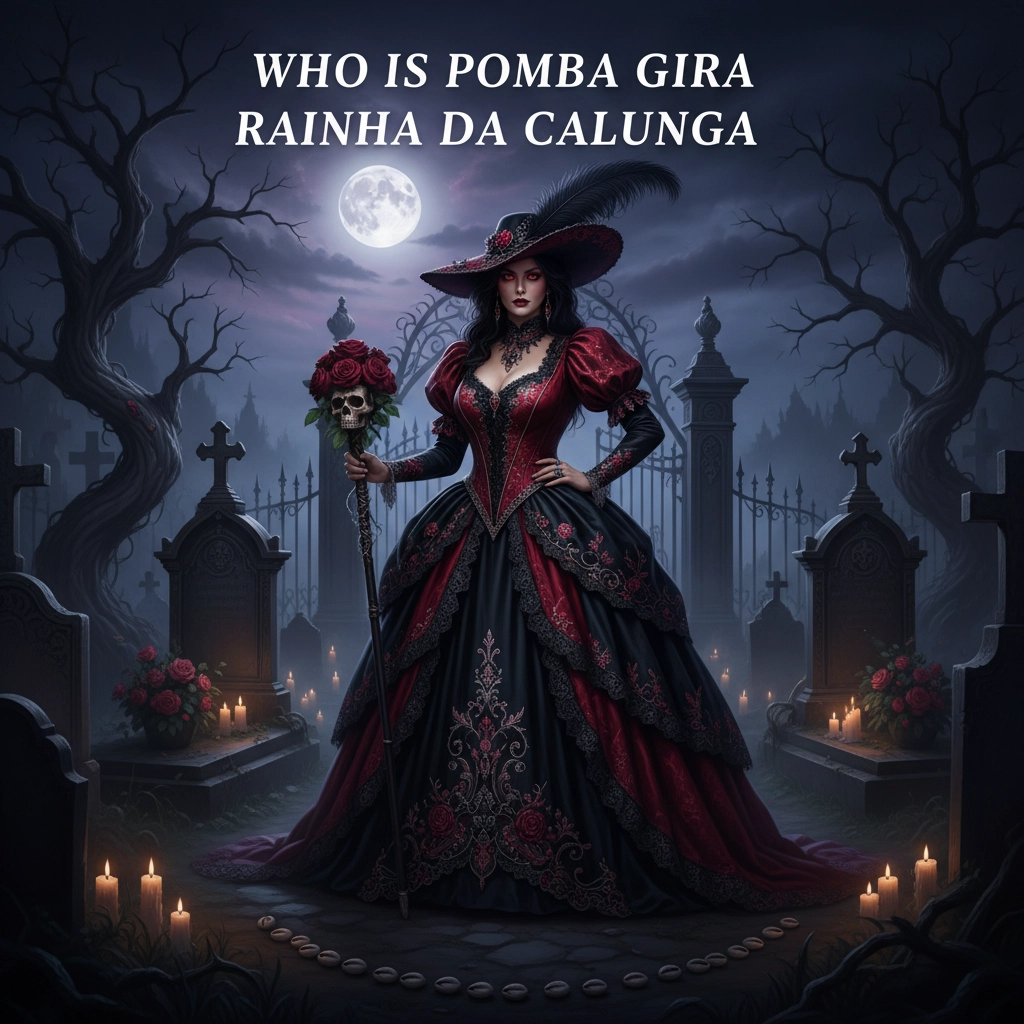Many people whisper her name in hushed tones, as if speaking too loudly might summon powers they're not prepared to face. But here's what most don't understand about Pomba Gira Rainha da Calunga: she's not the dark, malevolent force that popular misconceptions paint her to be. She's something far more complex, powerful, and essential to the spiritual ecosystem of Afro-Brazilian traditions.
The truth is, we're not just talking about another spirit guide or minor deity. We're discussing one of the most commanding figures in the Kimbanda pantheon: a queen who rules over the most sacred threshold between life and death, where the living must negotiate with the departed, and where respect isn't just expected, it's demanded.
Who Is This Mysterious Queen Really?
Pomba Gira Rainha da Calunga represents one of the most fascinating manifestations of Pomba Gira, the powerful Afro-Brazilian spirit central to Umbanda and Quimbanda traditions. Her name translates to "Queen of Calunga," with "Calunga" referring to both the sea and the cemetery: those liminal spaces where our world touches the realm of the ancestors.
But don't mistake her for just another spiritual entity in a crowded pantheon. In Kimbanda lineages with strong Yoruba influences, she functions as the direct messenger of feminine Orixa Ewa or Yewa, mysterious deities about whom very little is publicly known. This connection places her in an entirely different category of spiritual authority.
The name "Pomba Gira" itself derives from the Kimbundu phrase "pambu ia njila," meaning "crossroads." And if regular crossroads represent choice and transformation, imagine the power held by she who commands the ultimate crossroads: the boundary between life and death itself.

The Supreme Authority of Sacred Grounds
Here's where many people get it wrong: they think of cemeteries as places of fear and darkness. Pomba Gira Rainha da Calunga sees them as her royal court, her kingdom where she exercises absolute sovereignty. Everything that occurs within cemetery grounds passes through her hands and under her watchful gaze. Nothing escapes her notice, and nothing should be attempted there without first requesting her permission with proper respect and ceremony.
This isn't about superstition or fear-mongering. It's about understanding spiritual protocol in traditions where the dead aren't seen as gone, but as transformed into a different state of being. The cemetery becomes a sacred space of communication, healing, and spiritual work: but only when the proper queen is acknowledged and honored.
Within her domain, she directs with tremendous power and unwavering character. Practitioners describe her as having zero tolerance for disrespect or casual approach to her realm. She demands recognition not out of ego, but because maintaining the proper balance between worlds requires absolute authority and clear boundaries.
A Force of Female Power and Transformation
What sets Pomba Gira Rainha da Calunga apart from other spiritual entities is her embodiment of fierce feminine power combined with dominion over death and transformation. She represents female sexuality, desire, and independence, but elevated to the level of commanding life's most profound transitions.
She's often described as a goddess of power, eroticism, death, and when necessary, vengeance. But this isn't the Hollywood version of vengeance: it's cosmic justice, the kind that restores balance when the natural order has been disrupted. Her eroticism isn't mere sexuality but the life force itself, the creative power that continues even after physical death.
Many practitioners report that working with her involves confronting one's own relationship with mortality, power, and authentic feminine energy. She doesn't coddle or cushion difficult truths. Instead, she presents reality with crystal clarity, demanding that those who approach her do so with genuine intent and courage.

The Art of Working with Cemetery Royalty
Those called to work with Pomba Gira Rainha da Calunga discover that she appreciates elegance, quality, and proper presentation. Traditional offerings include red roses, fine perfumes, champagne, red candles, and items that reflect both beauty and power. These aren't bribes or payments, but expressions of respect and recognition of her status.
The timing of approaching her follows ancient patterns: typically at midnight, when the veil between worlds grows thinnest, and often on Mondays or Fridays when spiritual energy flows most strongly. But timing alone isn't enough; the approach must carry genuine reverence and clear intention.
She responds to those who understand that working with cemetery energies isn't about conjuring spirits for personal gain, but about participating in the ancient human tradition of ancestor veneration and death wisdom. She teaches that death isn't an ending but a transformation, and that the cemetery isn't a place of ending but of continued communication and healing.
Dispelling the Shadows of Misunderstanding
Here's what the sensationalized stories get wrong: Pomba Gira Rainha da Calunga isn't evil, demonic, or dangerous to those who approach with proper respect and understanding. The danger comes from misunderstanding her nature and attempting to work with cemetery energies without acknowledging her authority.
Some confuse her with Pomba Gira da Kalunga, but the distinction is crucial. While both work within cemetery domains, Rainha da Calunga holds the supreme position as queen, while da Kalunga operates as a commanding spirit but subordinate to the queen's authority. Understanding this hierarchy prevents spiritual missteps that could complicate one's practice.
The fear surrounding her often stems from colonial-influenced perspectives that demonized African spiritual traditions. In reality, she represents profound wisdom about death, transformation, and the continuity of consciousness beyond physical existence: concepts that many indigenous cultures worldwide have understood for millennia.
The Living Tradition Continues
What's remarkable about Pomba Gira Rainha da Calunga is how her veneration continues to evolve while maintaining ancient roots. Modern practitioners find in her a powerful ally for navigating contemporary challenges around personal power, authentic expression, and healthy relationships with mortality in death-phobic cultures.
She teaches that true power comes from understanding and accepting life's complete cycle, including its ending. Her domain over cemeteries represents not morbid fascination but mature acknowledgment that death wisdom enriches life itself. In a world that often tries to hide from mortality, she stands as a reminder that embracing death's reality enhances life's meaning.
The whispers of her name aren't fading in our modern world: they're finding new life among practitioners who understand that ancient wisdom offers solutions to contemporary spiritual hunger. She represents the kind of feminine power that doesn't apologize for its strength and doesn't compromise its standards for acceptance.
Through her, practitioners learn that respect for the ancestors isn't merely cultural tradition but practical spiritual technology for accessing wisdom that transcends individual lifetimes. She reminds us that we're part of an unbroken chain of consciousness that extends both backward to our ancestors and forward to future generations.
The cemetery queen continues her reign, not as a relic of the past but as a living force in contemporary spiritual practice, teaching anyone brave enough to approach that true power comes from understanding our place in the eternal dance between life and death.



